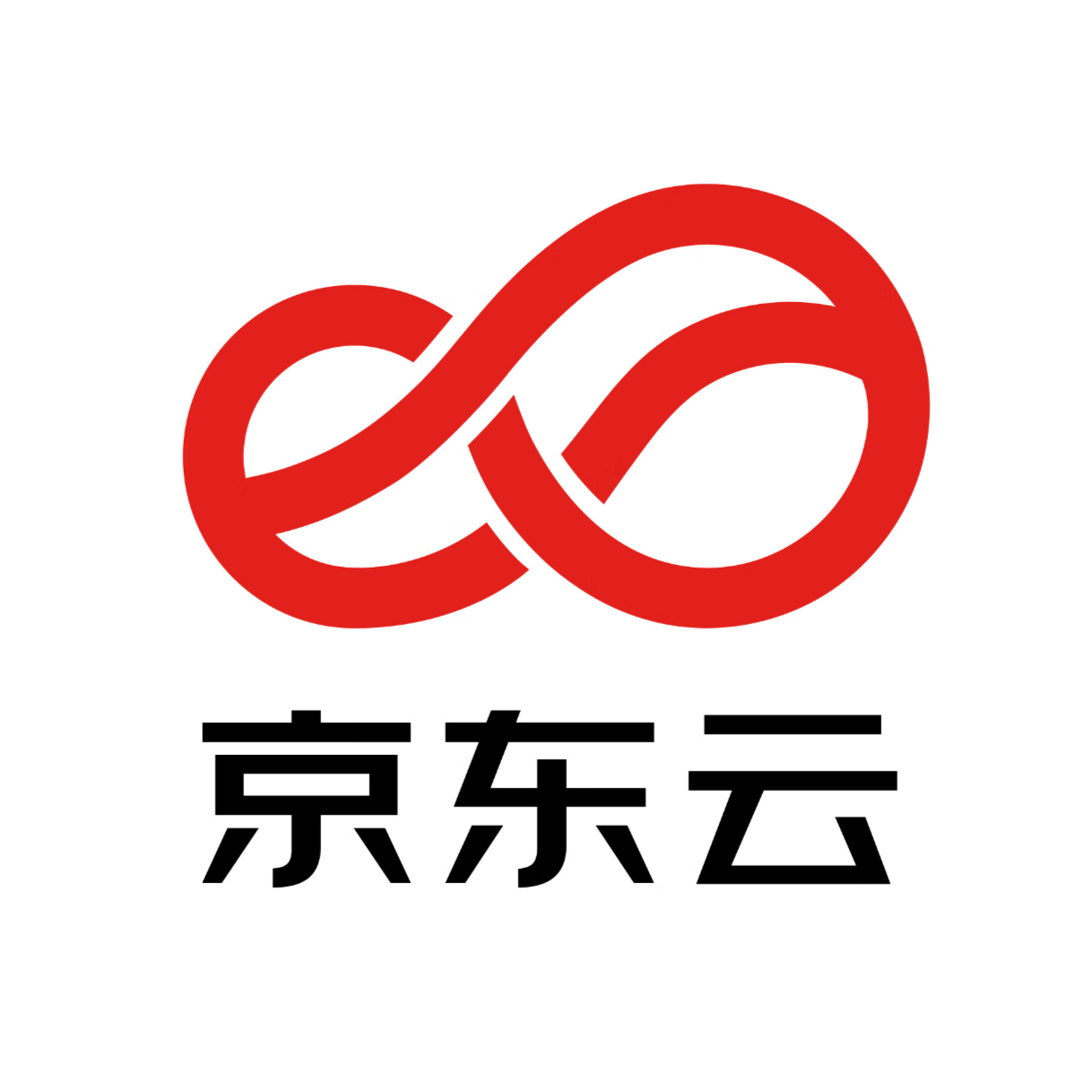作者:京东科技 贾世闻
RAG(Retrieval-Augmented Generation)技术在AI生态系统中扮演着至关重要的角色,特别是在提升大型语言模型(LLMs)的准确性和应用范围方面。RAG通过结合检索技术与LLM提示,从各种数据源检索相关信息,并将其与用户的问题结合,生成准确且丰富的回答。这一机制特别适用于需要应对信息不断更新的场景,因为大语言模型所依赖的参数知识本质上是静态的。
RAG技术的优势在于它能够利用外部知识库,引用大量的信息,以提供更深入、准确且有价值的答案,提高了生成文本的可靠性。此外,RAG模型具备检索库的更新机制,可以实现知识的即时更新,无需重新训练模型,这在及时性要求高的应用中占优势。
目前构建一个RAG并不是一个非常的事情。使用Langchain等成熟技术架构百十行代码就能构建一个Demo。那能不能利用目前的Rust生态构建一个简易的RAG。说干就干,本期和大家聊聊如果使用rust语言构建rag。
构建知识库
知识库构建主要是模型+向量库,为了保证所有系统中所有组件都使用rust构建,在限量数据库的选型上我们使用qdrant,纯rust构建的向量数据库。
知识库的构建最重要的步骤是embedding的过程。
过程如下:
- 模型加载
- 获取文本token
- 通过模型获取文本的Embedding
下面详细介绍每个过程细节及代码实现。
模型加载
以下代码用于加载模型和tokenizer
async fn build_model_and_tokenizer(model_config: &ConfigModel) -> Result<(BertModel, Tokenizer)> {
let device = Device::new_cuda(0)?;
let repo = Repo::with_revision(
model_config.model_id.clone(),
RepoType::Model,
model_config.revision.clone(),
);
let (config_filename, tokenizer_filename, weights_filename) = {
let api = ApiBuilder::new()
.build()?;
let api = api.repo(repo);
let config = api.get("config.json").await?;
let tokenizer = api.get("tokenizer.json").await?;
let weights = if model_config.use_pth {
api.get("pytorch_model.bin").await?
} else {
api.get("model.safetensors").await?
};
(config, tokenizer, weights)A
};
let config = std::fs::read_to_string(config_filename)?;
let mut config: Config = serde_json::from_str(&config)?;
let tokenizer = Tokenizer::from_file(tokenizer_filename).map_err(E::msg)?;
let vb = if model_config.use_pth {
VarBuilder::from_pth(&weights_filename, DTYPE, &device)?
} else {
unsafe { VarBuilder::from_mmaped_safetensors(&[weights_filename], DTYPE, &device)? }
};
if model_config.approximate_gelu {
config.hidden_act = HiddenAct::GeluApproximate;
}
let model = BertModel::load(vb, &config)?;
Ok((model, tokenizer))
}模型和tokenizer是系统中频繁调用的部分,所以为了避免重复加载,通过OnceCell构建静态全局变量
pub static GLOBAL_EMBEDDING_MODEL: OnceCell> = OnceCell::const_new();
pub async fn init_model_and_tokenizer() -> Arc<(BertModel, Tokenizer)> {
let config = get_config().unwrap();
let (m, t) = build_model_and_tokenizer(&config.model).await.unwrap();
Arc::new((m, t))
}在系统启动时加载模型
GLOBAL_RUNTIME.block_on(async {
log::info!("global runtime start!");
// 加载model
GLOBAL_EMBEDDING_MODEL
.get_or_init(init_model_and_tokenizer)
.await;
});Embedding 过程主要由一下函数实现。
pub async fn embedding_setence(content: &str) -> Result>> {
let m_t = GLOBAL_EMBEDDING_MODEL.get().unwrap();
let tokens = m_t
.1
.encode(content, true)
.map_err(E::msg)?
.get_ids()
.to_vec();
let token_ids = Tensor::new(&tokens[..], &m_t.0.device)?.unsqueeze(0)?;
let token_type_ids = token_ids.zeros_like()?;
let sequence_output = m_t.0.forward(&token_ids, &token_type_ids)?;
let (_n_sentence, n_tokens, _hidden_size) = sequence_output.dims3()?;
let embeddings = (sequence_output.sum(1)? / (n_tokens as f64))?;
let embeddings = normalize_l2(&embeddings)?;
let encodings = embeddings.to_vec2::()?;
Ok(encodings)
}函数通过tokenizer encode输入的文本,再使用模型embed token 获取一个三维的Tensor,最后归一化张量。
数据入库
知识库构建是将待检索文本向量化后存储到向量数据库的过程。
本次使用京东云文档作为原始文本,加工为以下格式。数据加工过程这里就不累述了。
{
"content": "# 服务计费\n\n主机迁移服务自身为免费服务,但是迁移目标为云主机镜像时,迁移过程依赖系统自动创建的 中转资源的配合,这些资源中涉及部分付费资源,会产生相应费用。\n\n迁移过程涉及的中转资付费资源配置及计费说明如下(单个迁移任务):\n\n| | 云主机 | 云硬盘 | 弹性公网IP |\n| --- | --- | --- | ------ |\n| 计费类型 | 按配置 | 按配置 | 按用量 |\n| 规格配置 | 2C4G (c.n2.large或c.n3.large或c.n1.large) | 系统盘:40G 通用型SSD 数据盘:通用型SSD,数量及容量取决于源服务器系统盘及数据盘情况 | 30Mbps |\n| 费用预估 | 云主机规格每小时价格\\*迁移时长 | 云硬盘规格每小时价格\\*迁移时长 | 弹性公网IP每小时保有费\\*迁移时长 仅使用弹性公网IP入方向流量,只涉及IP保有用,不涉及流量费用 |\n\n> 提示:\n>\n> * 迁移时长取决于源服务器迁数据量以及源服务器公网出方向带宽,公网连接顺畅且源服务器公网出方向带宽不低于22.5Mbps的情况下(主机迁移为单线程传输,京东云云主机在单流传输下实际带宽为带宽上限的75%左右),实际数据容量为5GB的磁盘迁移时长在30分钟左右。\n> * 中转实例实例绑定的安全组出方向默认拒绝所有流量,因此默认情况下降不会产生任何公网出方向收费流量,但此配置也影响了云主机部分监控指标的上报,如需要监控中转实例的全部监控数据,可自行调整安全组规则方向出方向443端口。",
"title": "服务计费说明",
"product": "云主机 CVM",
"url": "https://docs.jdcloud.com/cn/virtual-machines/server-migration-service/billing"
}入库完整代码如下:
use anyhow::Error as E;
use anyhow::Result;
use candle_core::Device;
use candle_core::Tensor;
use candle_nn::VarBuilder;
use candle_transformers::models::bert::{BertModel, Config, HiddenAct, DTYPE};
use hf_hub::{api::tokio::Api, Repo, RepoType};
use qdrant_client::qdrant::CollectionExistsRequest;
use qdrant_client::qdrant::CreateCollectionBuilder;
use qdrant_client::qdrant::DeleteCollection;
use qdrant_client::qdrant::Distance;
use qdrant_client::qdrant::UpsertPointsBuilder;
use qdrant_client::qdrant::VectorParamsBuilder;
use qdrant_client::Payload;
use qdrant_client::{
qdrant::{
CollectionOperationResponse, CreateCollection, PointStruct, PointsOperationResponse,
UpsertPoints,
},
Qdrant,
};
use serde::{Deserialize, Serialize};
use serde_json::from_str;
use std::fs;
use std::sync::Arc;
use tokenizers::Tokenizer;
use tokio::sync::OnceCell;
use uuid::Uuid;
use walkdir::WalkDir;
#[derive(Debug, Serialize, Deserialize, Clone)]
pub struct Doc {
pub content: String,
pub title: String,
pub product: String,
pub url: String,
}
#[derive(Debug, PartialEq, Serialize, Deserialize, Clone)]
pub struct ModelConfig {
#[serde(default = "ModelConfig::model_id_default")]
pub model_id: String,
#[serde(default = "ModelConfig::revision_default")]
pub revision: String,
#[serde(default = "ModelConfig::use_pth_default")]
pub use_pth: bool,
#[serde(default = "ModelConfig::approximate_gelu_default")]
pub approximate_gelu: bool,
}
impl Default for ModelConfig {
fn default() -> Self {
Self {
model_id: Self::model_id_default(),
revision: Self::revision_default(),
use_pth: Self::use_pth_default(),
approximate_gelu: Self::approximate_gelu_default(),
}
}
}
impl ModelConfig {
fn model_id_default() -> String {
"moka-ai/m3e-large".to_string()
}
fn revision_default() -> String {
"main".to_string()
}
fn use_pth_default() -> bool {
true
}
fn approximate_gelu_default() -> bool {
false
}
}
pub static GLOBAL_MODEL: OnceCell> = OnceCell::const_new();
pub static GLOBAL_TOKEN: OnceCell> = OnceCell::const_new();
pub async fn init_model() -> Arc {
let config = ModelConfig::default();
let (m, _) = build_model_and_tokenizer(&config).await.unwrap();
Arc::new(m)
}
pub async fn init_tokenizer() -> Arc {
let config = ModelConfig::default();
let (_, t) = build_model_and_tokenizer(&config).await.unwrap();
Arc::new(t)
}
async fn build_model_and_tokenizer(model_config: &ModelConfig) -> Result<(BertModel, Tokenizer)> {
let device = Device::new_cuda(0)?;
let repo = Repo::with_revision(
model_config.model_id.clone(),
RepoType::Model,
model_config.revision.clone(),
);
let (config_filename, tokenizer_filename, weights_filename) = {
let api = Api::new()?;
let api = api.repo(repo);
let config = api.get("config.json").await?;
let tokenizer = api.get("tokenizer.json").await?;
let weights = if model_config.use_pth {
api.get("pytorch_model.bin").await?
} else {
api.get("model.safetensors").await?
};
(config, tokenizer, weights)
};
let config = std::fs::read_to_string(config_filename)?;
let mut config: Config = serde_json::from_str(&config)?;
let tokenizer = Tokenizer::from_file(tokenizer_filename).map_err(E::msg)?;
let vb = if model_config.use_pth {
VarBuilder::from_pth(&weights_filename, DTYPE, &device)?
} else {
unsafe { VarBuilder::from_mmaped_safetensors(&[weights_filename], DTYPE, &device)? }
};
if model_config.approximate_gelu {
config.hidden_act = HiddenAct::GeluApproximate;
}
let model = BertModel::load(vb, &config)?;
Ok((model, tokenizer))
}
pub async fn embedding_setence(content: &str) -> Result>> {
let m = GLOBAL_MODEL.get().unwrap();
let t = GLOBAL_TOKEN.get().unwrap();
let tokens = t.encode(content, true).map_err(E::msg)?.get_ids().to_vec();
let token_ids = Tensor::new(&tokens[..], &m.device)?.unsqueeze(0)?;
let token_type_ids = token_ids.zeros_like()?;
let sequence_output = m.forward(&token_ids, &token_type_ids)?;
let (_n_sentence, n_tokens, _hidden_size) = sequence_output.dims3()?;
let embeddings = (sequence_output.sum(1).unwrap() / (n_tokens as f64))?;
let embeddings = normalize_l2(&embeddings).unwrap();
let encodings = embeddings.to_vec2::()?;
Ok(encodings)
}
pub fn normalize_l2(v: &Tensor) -> Result {
Ok(v.broadcast_div(&v.sqr()?.sum_keepdim(1)?.sqrt()?)?)
}
pub struct QdrantClient {
client: Qdrant,
}
impl QdrantClient {
pub async fn create_collection(
&self,
request: impl Into,
) -> Result {
let resp = self.client.create_collection(request).await?;
Ok(resp)
}
pub async fn delete_collection(
&self,
request: impl Into,
) -> Result {
let resp = self.client.delete_collection(request).await?;
Ok(resp)
}
pub async fn collection_exists(
&self,
request: impl Into,
) -> Result {
let resp = self.client.collection_exists(request).await?;
Ok(resp)
}
pub async fn load_dir(&self, path: &str, collection_name: &str) {
let mut points = vec![];
for entry in WalkDir::new(path)
.into_iter()
.filter_map(Result::ok)
.filter(|e| !e.file_type().is_dir() && e.file_name().to_str().is_some())
{
if let Some(p) = entry.path().to_str() {
let id = Uuid::new_v4();
let content = match fs::read_to_string(p) {
Ok(c) => c,
Err(_) => continue,
};
let doc = match from_str::(content.as_str()) {
Ok(d) => d,
Err(_) => continue,
};
let mut payload = Payload::new();
payload.insert("content", doc.content);
payload.insert("title", doc.title);
payload.insert("product", doc.product);
payload.insert("url", doc.url);
let vector_contens = embedding_setence(content.as_str()).await.unwrap();
let ps = PointStruct::new(id.to_string(), vector_contens[0].clone(), payload);
points.push(ps);
if points.len().eq(&100) {
let p = points.clone();
self.client
.upsert_points(UpsertPointsBuilder::new(collection_name, p).wait(true))
.await
.unwrap();
points.clear();
println!("batch finish");
}
}
}
if points.len().gt(&0) {
self.client
.upsert_points(UpsertPointsBuilder::new(collection_name, points).wait(true))
.await
.unwrap();
}
}
}
#[tokio::main]
async fn main() {
// 加载模型
GLOBAL_MODEL.get_or_init(init_model).await;
GLOBAL_TOKEN.get_or_init(init_tokenizer).await;
let collection_name = "default_collection";
// The Rust client uses Qdrant's GRPC interface
let qdrant = Qdrant::from_url("http://localhost:6334").build().unwrap();
let qdrant_client = QdrantClient { client: qdrant };
if !qdrant_client
.collection_exists(collection_name)
.await
.unwrap()
{
qdrant_client
.create_collection(
CreateCollectionBuilder::new(collection_name)
.vectors_config(VectorParamsBuilder::new(1024, Distance::Dot)),
)
.await
.unwrap();
}
qdrant_client
.load_dir("/root/jd_docs", collection_name)
.await;
println!("{:?}", qdrant_client.client.health_check().await);
}以上代码要完成的任务如下:
推理服务
推理服务使用 rust 构建的 mistral.rs。
由于国内访问hf 并不方便所以先通过 https://hf-mirror.com/ 现将模型下载到本地。本次使用qwen模型
HF_ENDPOINT="https://hf-mirror.com" huggingface-cli download --repo-type model --resume-download Qwen/Qwen2-7B --local-dir /root/Qwen2-7B启动 mistralrs-server
git clone https://github.com/EricLBuehler/mistral.rs
cd mistral.rs
cargo run --bin mistralrs-server --features cuda -- --port 3333 plain -m /root/Qwen2-7B -a qwen2推理服务调用
mistral.rs 支持 Openai 的 api接口,使用 openai-api-rs调用即可。推理时间比较长 timeout 要设置长一些,若timeout 时间太短有可能不等返回结果就已经强制超时。
pub static GLOBAL_OPENAI_CLIENT: Lazy> = Lazy::new(|| {
let mut client =
OpenAIClient::new_with_endpoint("http://10.0.0.7:3333/v1".to_string(), "EMPTY".to_string());
client.timeout = Some(30);
Arc::new(client)
});
pub async fn inference(content: &str, max_len: i64) -> Result> {
let req = ChatCompletionRequest::new(
"".to_string(),
vec![chat_completion::ChatCompletionMessage {
role: chat_completion::MessageRole::user,
content: chat_completion::Content::Text(content.to_string()),
name: None,
tool_calls: None,
tool_call_id: None,
}],
)
.max_tokens(max_len);
let cr = GLOBAL_OPENAI_CLIENT.chat_completion(req).await?;
Ok(cr.choices[0].message.content.clone())
}将Retriever和推理服务集成
pub async fn answer(question: &str, max_len: i64) -> Result> {
let retriver = retriever(question, 1).await?;
let mut context = "".to_string();
for sp in retriver.result {
let payload = sp.payload;
let product = payload.get("product").unwrap().to_string();
let title = payload.get("title").unwrap().to_string();
let content = payload.get("content").unwrap().to_string();
context.push_str(&product);
context.push_str(&title);
context.push_str(&content);
}
let prompt = format!(
"你是一个云技术专家, 使用以下检索到的Context回答问题。用中文回答问题。
Question: {}
Context: {}
",
question, context
);
log::info!("{}", prompt);
let req = ChatCompletionRequest::new(
"".to_string(),
vec![chat_completion::ChatCompletionMessage {
role: chat_completion::MessageRole::user,
content: chat_completion::Content::Text(prompt),
name: None,
tool_calls: None,
tool_call_id: None,
}],
)
.max_tokens(max_len);
let cr = GLOBAL_OPENAI_CLIENT.chat_completion(req).await?;
Ok(cr.choices[0].message.content.clone())
}后记
完整工程地址[embedding_server]https://github.com/jiashiwen/embedding_server
后续工程问题,多卡推理,多机推理,推理加速
资源对比
GPU 型号
|=========================================+========================+======================| | 0 NVIDIA A30 Off | 00000000:00:07.0 Off | 0 | | N/A 30C P0 29W / 165W | 0MiB / 24576MiB | 0% Default | | | | Disabled | +-----------------------------------------+------------------------+----------------------+Embedding 资源
m3e-large
vllm
+-----------------------------------------------------------------------------------------+ | Processes: | | GPU GI CI PID Type Process name GPU Memory | | ID ID Usage | |=========================================================================================| | 0 N/A N/A 822789 C ...iprojects/rag_demo/.venv/bin/python 1550MiB | +-----------------------------------------------------------------------------------------+candle
+-----------------------------------------------------------------------------------------+ | Processes: | | GPU GI CI PID Type Process name GPU Memory | | ID ID Usage | |=========================================================================================| | 0 N/A N/A 823261 C target/debug/embedding_server 1484MiB | +-----------------------------------------------------------------------------------------+
推理资源
Qwen1.5-1.8B-Chat
vllm
|=========================================================================================| | 0 N/A N/A 822437 C /usr/bin/python3 20440MiB | +-----------------------------------------------------------------------------------------+mistral.rs
|=========================================================================================| | 0 N/A N/A 822174 C target/debug/mistralrs-server 22134MiB | +-----------------------------------------------------------------------------------------+
Qwen2-7B
vllm 现存溢出
[rank0]: OutOfMemoryError: CUDA out of memory. Tried to allocate 9.25 GiB. GPUmistral.rs
|=========================================================================================| | 0 N/A N/A 656923 C target/debug/mistralrs-server 22006MiB | +-----------------------------------------------------------------------------------------+
从实际情况来看,Embedding 模型再资源占用情况 rust candle框架使用显存略小些;推理模型Qwen1.5-1.8B-Chat,vllm 资源占用略小。Qwen2-7B vllm直接显存溢出。
坑
大部分框架中使用 hf-hub 采用同步调用,不支持境内的mirror。动手改造
src/api/tokio.rs
impl ApiBuilder {
/// Set endpoint example 'https://hf-mirror.com'
pub fn with_endpoint(mut self, endpoint: &str) -> Self {
self.endpoint = endpoint.to_string();
self
}
}








